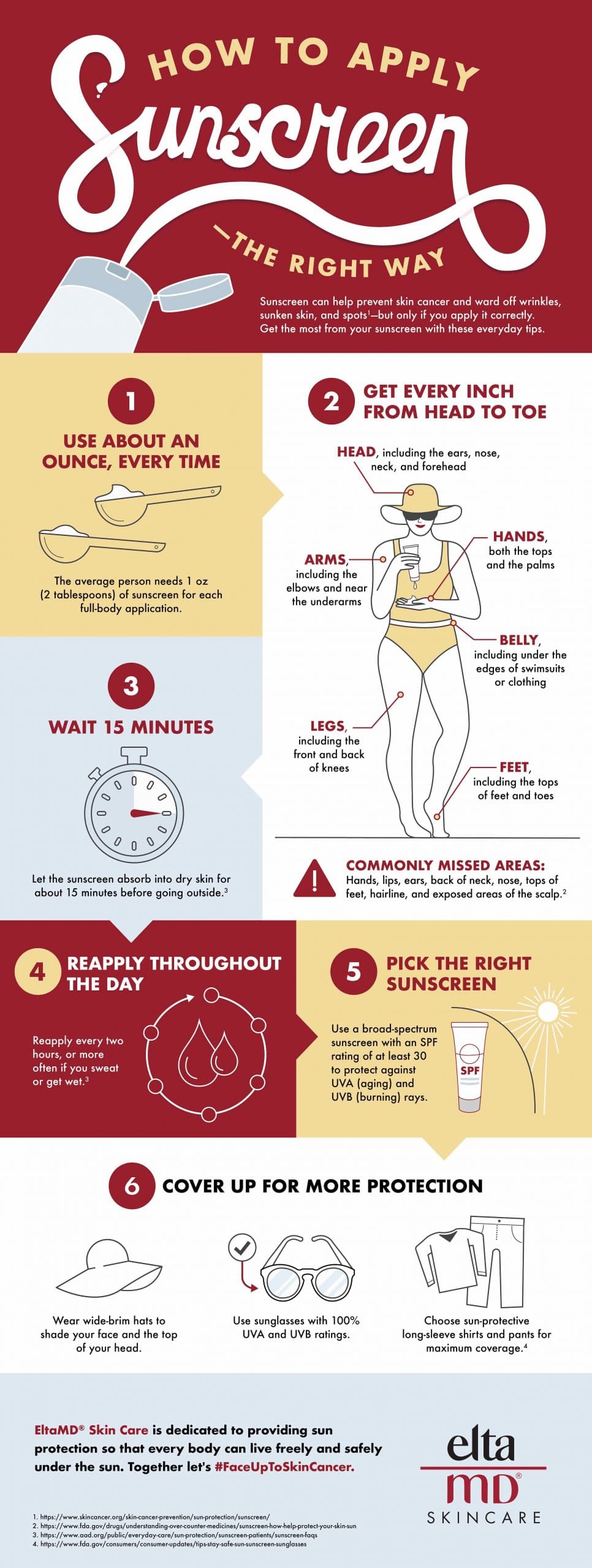Your Family Deserves the Best Care Book an Appointment
Your skin health matters, so don’t delay. Our clinicians look forward to treating you and your family at one of our local New England practices.
Find Your Nearest APDerm Center
Skin care needs vary from person to person, but there’s one thing we all have in common: everyone, everywhere, every day, needs sunscreen.
That’s because sunscreen is powerful stuff, and regular use can protect you from a host of issues. According to the Skin Cancer Foundation, it can help reduce your risk of skin cancers by up to 50 percent and also help prevent wrinkles, sunken skin, and age spots.
But for all it does to help the skin, many people still don’t know how to apply sunscreen the right way—and improper use can shortchange you of its benefits. As the American Academy of Dermatology reports, most people only use about half as much sunscreen as they should. Others may not apply it everywhere or forget to reapply.
Despite your best intentions, it can be easy to slip into bad habits and lose out on the preventive power of sunscreen. But by following these best practices, you’ll be well on your way to improving your skin health.
If you’re like many people, you may only use a dollop of sunscreen or less each time you put it on your whole body. Unfortunately, that’s not nearly enough.
Most people should use about an ounce (two tablespoons) of sunscreen for a single full-body application, though you may need more depending on your size. You should use the same amount for each reapplication, even for spray-on sunscreens.
If that sounds like overkill, the science begs to differ: In 2018, researchers compared the “typical” sunscreen use with a higher, recommended amount—about 2 milligrams of thickness per centimeter of surface area.
People who spread their sunscreen on too thinly didn’t get the full protection from it. The study found that in one day, typical users had more skin damage than those who followed the suggested amounts got in five whole days of sun exposure.
When in doubt, apply liberally. That’s the advice from the U.S. Food and Drug Administration. What that means can depend on your specific needs—but it’s probably more than you might think. If you still have concerns, you can always check with a Dermatologist to see what’s right for you.
Apply sunscreen to your whole body, from head to toe. If you think you’re already doing that, you might want to check again. As Consumer Reports found, just one in three people manage to rub sunscreen on every inch of exposed skin. This can yield patchy burns and an increased risk of skin damage.
Watch out for these commonly overlooked areas:
Even if you’re wearing clothing or a hat, experts still recommend doing a full-body application before you get dressed. This can help you stay protected if your clothing rides up or if you shed layers.
After rubbing the sunscreen in, wait 15 minutes before going outside. This gives it enough time to absorb into your skin.
After your first application of the day, keep the sunscreen bottle handy: You’ll need it again in two hours or sooner.
With so many variables at play between your body and the environment, higher SPF or an overcast day doesn’t necessarily buy you more time between applications. Every sunscreen, no matter the weather, needs to be reapplied according to the instructions, usually every two hours or after getting wet or sweating. When reapplying, always dry your skin first. Never apply sunscreen to wet skin.
If the sunscreen says it’s “water-resistant,” check the label for how long that resistance lasts in the water. It will either be 40 or 80 minutes, as the FDA explains, but never longer.
With all those reapplications, you’re bound to go through a lot of sunscreen, so remember to pack extra. A family of four will likely use up a full bottle in one afternoon.
When shopping for sunscreens, check the label for three things:
Beyond those factors, you’ll have many options. Try different sunscreens to find your favorite: you’ll be using it often, so pick something you like! A product like EltaMD’s UV Active offers all these benefits in a lightweight, non-irritating formula.
Even if you don’t expect to be outdoors for long, or at all, you should still grab a good sunscreen just in case, and maybe extra coverings like a wide-brimmed hat, long-sleeved shirts, and pants for maximum coverage. Sunglasses with 100 percent UVA and UVB ratings are important, too. Keeping these items in your bag or car will help ensure that you’re never left without protection.
It will take a little extra effort to get right, but spend the time to apply and reapply your sunscreen correctly—it’ll make a bigger difference than you might think.